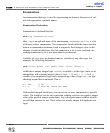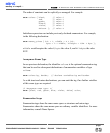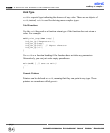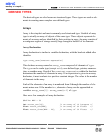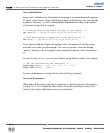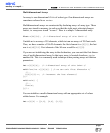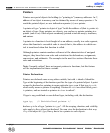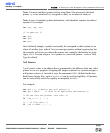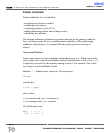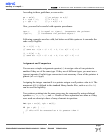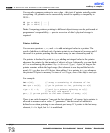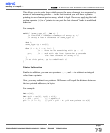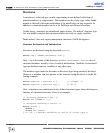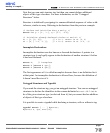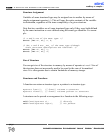
Note: You must initialize pointers before using them! Our previously declared
pointer
*p is not initialized (i.e. assigned a value), so it cannot be used yet.
Note: In case of multiple pointer declarations, each identifier requires an indirect
operator. For example:
int *pa, *pb, *pc;
/* is same as: */
int *pa;
int *pb;
int *pc;
Once declared, though, a pointer can usually be reassigned so that it points to an
object of another type. mikroC lets you reassign pointers without typecasting, but
the compiler will warn you unless the pointer was originally declared to be point-
ing to
void. You can assign a void pointer to a non-void pointer – refer to Void
Type for details.
Null Pointers
A null pointer value is an address that is guaranteed to be different from any valid
pointer in use in a program. Assigning the integer constant 0 to a pointer assigns a
null pointer value to it. Instead of zero, the mnemonic
NULL (defined in the stan-
dard library header files, such as stdio.h) can be used for legibility. All pointers
can be successfully tested for equality or inequality to
NULL.
For example:
int *pn = 0; /* Here's one null pointer */
int *pn = NULL; /* This is an equivalent declaration */
/* We can test the pointer like this: */
if ( pn == 0 ) { ... }
/* .. or like this: */
if ( pn == NULL ) { ... }
MikroElektronika:
Development
tools
-
Books
-
Compilers
69
page
mikroC
- C Compiler for Microchip PIC microcontrollers
mikroC
making it simple...




